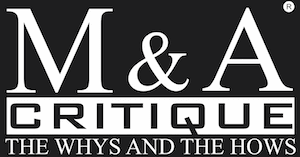The Insurance Regulatory and Development Authority of India (Irdai) confirmed that it had given the approval for the ‘reverse merger’. The deal, as it is structured, makes sense for the companies as it will be tax-efficient, a person close to the developments said. But, in the post-General Anti-Avoidance Rules (GAAR) era, some questions from the revenue authorities could emerge.
HDFC Ergo-HDFC GI merger could face a few questions in post-GAAR era
Industry: Insurance 2017-08-30
Instead of merging HDFC General Insurance (formerly L&T General Insurance) with the larger entity HDFC Ergo, the promoters have gone the reverse way.
As the first merger of insurance companies in the non-life space in India, the transaction was bound to create interest, which it did. The ‘reverse merger’ has not been noticed, though.
There is no doubt the deal is value positive for the existing shareholders. And, as and when the new entity is listed on the stock markets, it would hope that potential investors would believe the same.
Last week, HDFC Ergo announced it had secured the approval of the National Company Law Tribunal (NCLT) and Irdai to complete the merger of HDFC General Insurance with itself. The merger became effective from August 16.
Interestingly, the word ‘reverse merger’ was not used, and for good reason. The deal will consolidate HDFC Ergo’s position as the third-largest private insurer in India with a market share of over 5.25 per cent, according to Irdai’s June 2017 data. In 2016, HDFC Ergo had bought out L&T General Insurance and rechristened it HDFC General Insurance. The entity has till now operated as a wholly owned subsidiary of HDFC Ergo.
The GAAR issue is simple. Tax authorities can justifiably ask if a merger is meant only to create tax shelter, to which the parties will have to demonstrate there is, instead, a larger public interest involved. GAAR kicked in from April 1 this year.
“It wasn’t so before GAAR as the courts did not have the right to question this angle,” said a partner from one of the big four audit firms. An email sent to HDFC Ergo a few weeks ago remained unanswered.
Corporate governance expert Kaushik Dutta, however, said both from the shareholders’ point of view as well as larger potential investors, creating a tax-efficient structure was quite fine.
“As long as the shareholders (in this case parent company HDFC and German insurance company Ergo) have more on the table, the deal works from the corporate governance perspective,” said Dutta, head of Delhi-based think tank Thought Arbitrage Research Institute that tracks corporate governance.
A media report has noted that the net worth of standalone entity HDFC Ergo was Rs 1,812 crore as on March 31, 2017. This is expected to drop to Rs 1,485 crore after the merger due to the accumulated losses of HDFC General Insurance. This is where the tax advantage stemming from the reverse merger comes in useful.
HDFC Ergo has also been careful to ensure that amid all these developments the connect with the insured public is maintained. This could be the reason why the company has not made it up front that it is merging with its subsidiary to create a third new entity. While it is true that nothing palpable would have changed for the public, insurance does run on a very thin sliver of confidence among those insured. No company will want to disturb this confidence. Thus, while the reverse merger makes sense financially, it is not a public accreting idea.
Source: Business-Standard 